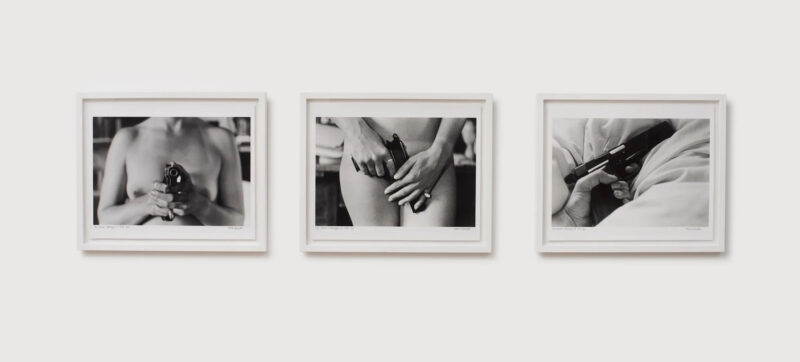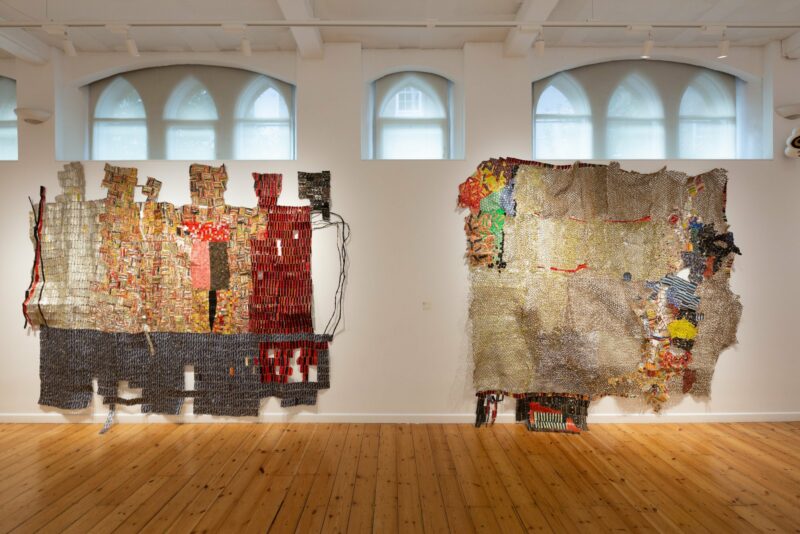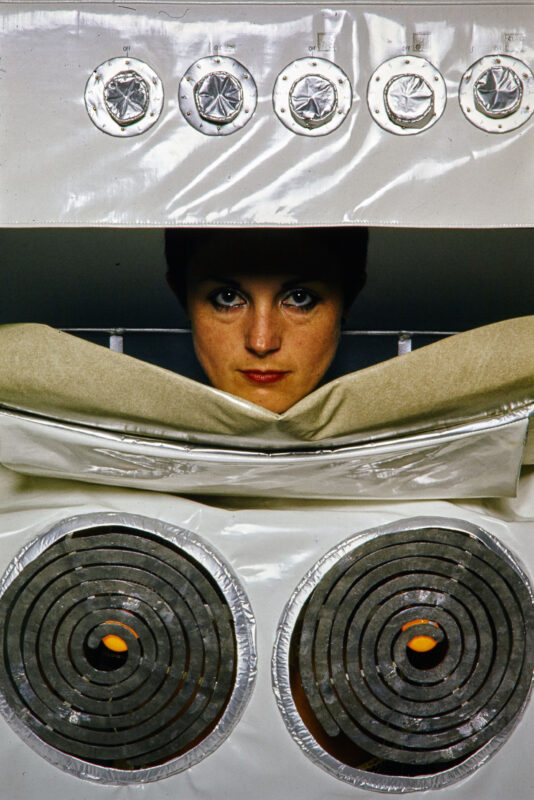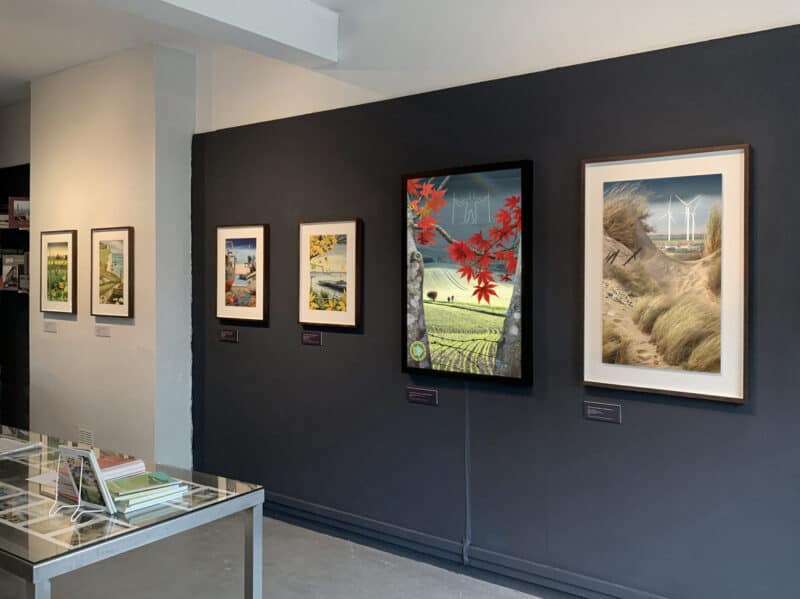Not a flash pan fad but thick formal plots. Alexis Hunter’s 10 Seconds images acts of revolt which demand we look beyond quick story lines.
To sketch the scene(s): suburban Britain, sometime in ‘79; a couple, a man and a woman, eyes not seen per se but jested to through well-wrought gestures, sit tight aside a set side table, dull corduroy and silk slipping over their respective knees; they share a drink, some baroquely labelled red. How bijou.
— santé, he says.
— a pretentious pretence (an allusion to the reach of his shallow world-ideal), she thinks.
It’s a Sunday’s eve. A time for reflection, indeed, a time of anticipation. The scene (the scenes) are sparse, with red dotting white, waiting. And they sit, waiting, beneath a cropped wedding photo. His presence gone but all omnipotent, pressing white.
— …
— Isn’t this just the most special photo of baby Alex? she says, the sharp sense of dolor and longing pointedly writ in her hands.
— Pass, he says, dare I say, passively.
Clang… dainty vace down, water pouring, now red wine flying; a stumble of hands and decorum destroyed.
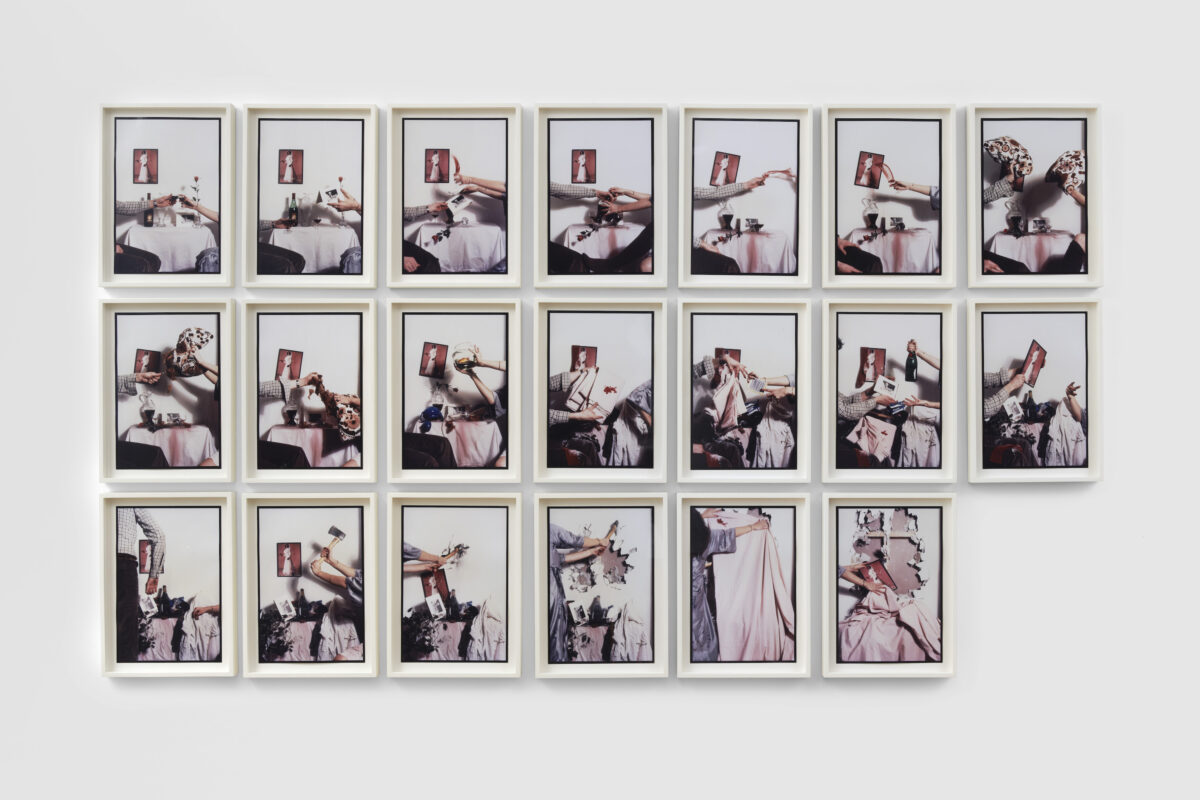
The storyline lingering in Alexis Hunter’s (1948-2014) photo-narrative Domestic Warfare, 1979 — currently on display in her solo exhibition 10 Seconds, at Richard Saltoun, London — opens slowly. Water spilt and wine slung, three photographs into this twenty-image series, the pace of the action picks up. Now moving at a gripping speed, as the series unfolds, frame by frame, we witness the wayward axing of a becoming marital evening: a plaid pillow fight descends into a flying fish bowl, unheard accusations — poor cleaning, perhaps, alcoholism — leading to vivacious aggression and the crumbling of a pressing white wall.
Hunter moved to the UK from Auckland (New Zealand / Aotearoa) in the early 1970s. A time of ‘feminist revolution’ (to risk using a homogenising term), she quickly became an active member of both the Artists Union Women’s Workshop and the Woman’s Free Arts Alliance, using her photographic artworks to upend patriarchal ideals. In these highly performative images, ‘the tyranny of fashion, domestic violence and the exploitation of woman’ (to quote the exhibition’s press release), become Hunter’s provocative subject matter. More than photographic documentation of a feminist revolution, Hunter’s artworks balance conceptual and formal concerns, creating sequential compositions which spark deep theoretical thinking; plots that demand we look beyond the lacquered sheen of patriarchal social life. It is no wonder therefore that her artwork The Marxist’s Wife (still does the housework), 1978/2005 features in the exhibition Women in Revolt: Art and Activism in the UK 1970-1990, at Tate Britan until April 7, 2024.
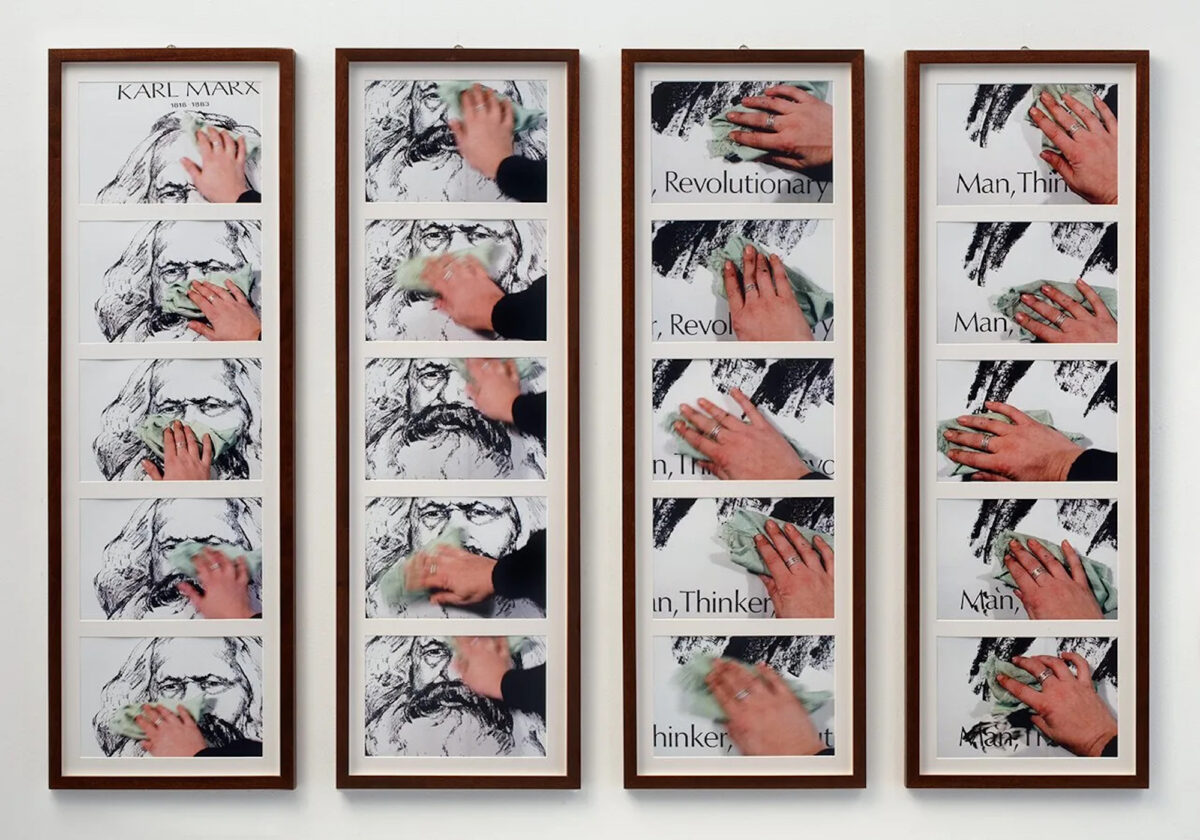
Co-opting ideologies of gender normativity, how a woman should appear and behave, promulgated by capitalist industry and the male-dominated mass media, Hunter constructs her series to picture narratives which blur the sexual and the political. As with Domestic Warfare, these photo-narratives often unfold as extravagant acts of revolt. They are far more than meek political theatrics however; more than a shiny TV show, to be seen, consumed and repeated if ever.
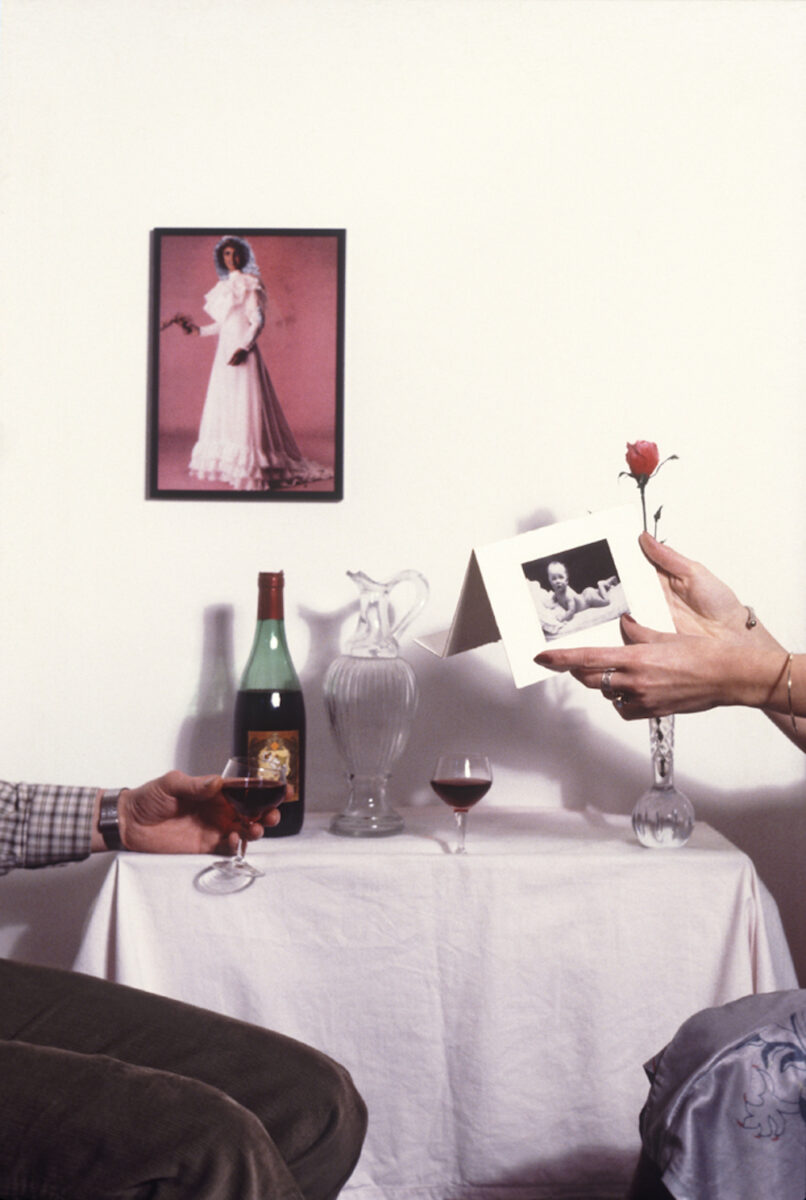
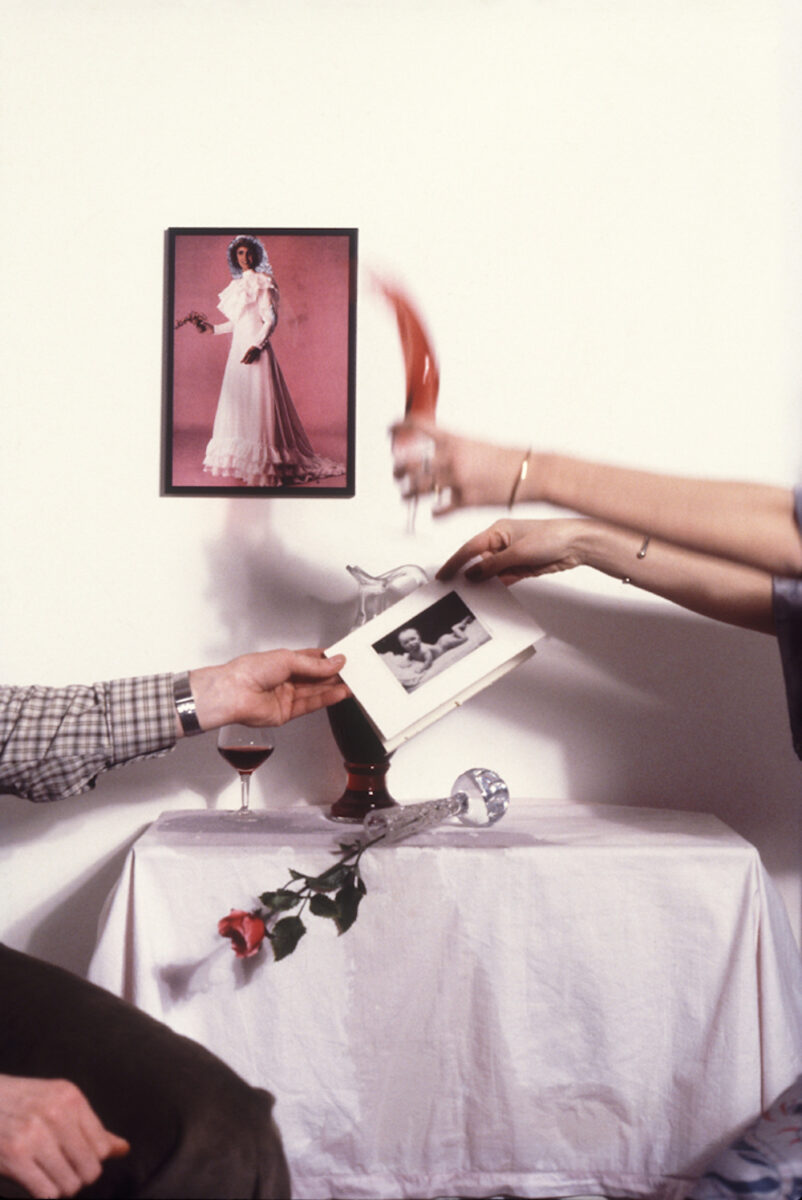
To me, in their buffered progression, the gaps in narrative as well as the incidental slippages and sly changes between the photographs which constitute Hunter’s plotlines demand we become witnesses to the background apparatus that stage and sell oppressive modes of social life. Paying attention to the decorative details behind the absurd action in Domestic Warfare, for example, we witness the almost magical removal of a red wine bottle (between images two and three), its contents now found in a classical glass water jug. Not of major formal or conceptual significance perhaps, but personally once noticed this goof draws my attention to the structural composition of each image, making me more cognisant of the subtleties of Hunter’s formal lyricism. Something seen in the red touches that dot the series: here, lush rouge not only connects the female protagonist to the framed photo of a woman in a quasi-Edwardian wedding dress but chromatically links these female forms to the red wine that catalysed the carnage imaged across the twenty stills. Holding this overly associative reading in mind and then connecting this to the two photographs seen in each frame, images which give the narrative its sense of becoming — a photograph of a baby and that wedding photo — I could suggest that this background resonance is an inner-image visualisation of a male-dominated culture’s tight cropping of female possibility; how a woman’s life, from cradle to grave, is prescribed, sold in and as something photogenically repetitive.
Hunter’s are brazen imagings of feminist revolution. My interpretive reading of Domestic Warfare here is most definitely an over-reach … one that runs counterintuitively to Hunter’s own critical co-option of the advertising industry’s logics of attention — the creation of spectacular advertisements which aim to sell an ideal in 10 seconds. But surely that is what all resonant ‘radical’ art should do. Rather than a flash pan fad, radical art should jolt us, it should slow us down and force us to think deeply about the structures that impose an object narrative upon things.
Alexis Hunter: 10 Seconds curated by Natasha Hoare, at Richard Saltoun Gallery London, until 30th March 2024.


